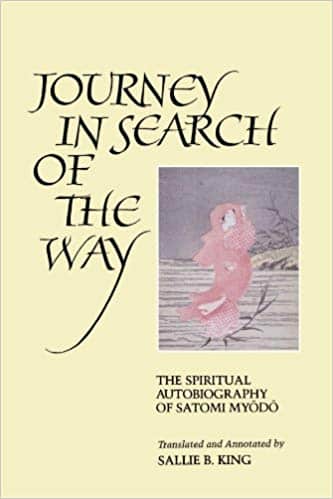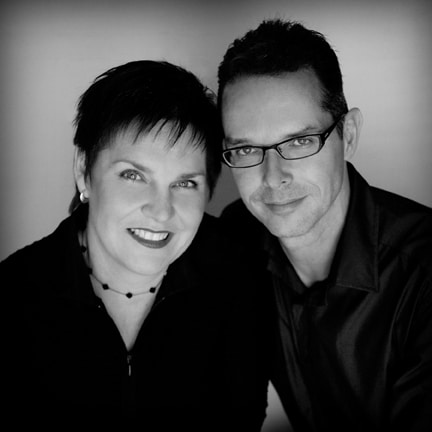
Translated and annotated by Sallie B. King
Journey in Search of the Way is the autobiography of Satomi Myodo (1896-1978) who trained as a miko (shamaness), studied Shinto and finally practiced Zen. She talks about her spiritual experiences, struggles and insights in a very candid and honest way.
This autobiography has been translated and annotated by Sallie B King who is a professor of Religion at James Madison University. Her commentary on Satomi’s life, experiences and cultural heritage will help you to deepen your understanding of what the autobiography is about.
This book is a must read for any serious practitioner or teacher of the system of Reiki as it discusses spiritual practices, political issues and personal struggles in the time the founder of the system of Reiki, Usui Mikao, was alive and teaching. It will help you to gain a better understanding of the cultural heritage of the system of Reiki and its development. Below are just some of the many hidden gems to be found in this book in which you can also see the main elements of the system of Reiki.
Quotes from Journey in Search of the Way with additional reflections by Frans and Bronwen Stiene…
‘Finally we did the “deep chant”, taking the vowels a, i, u, e, o and energetically sining them out with our whole body and soul, sound by sound, as u, a, i, e… Sensei always said, “teaching this discipline is the greatest kindness. The first step in your practice is to practice this.”‘
This corresponds to how traditionally the mantras, one of the main five elements of the system of Reiki, were practiced within Okuden level II and Shinpiden level III of the system of Reiki.
‘You think that satori is something that comes to you from outside yourself, but you’re wrong. Satori shines out from within you!’
Within many modern schools of the system of Reiki the symbols and mantras are used externally while traditionally they were used internally for personal spiritual development.
‘If you ever sit down with a sense of “This will do”, you’ve had it!’
The system of Reiki is a life long journey, not just a one or two day course.
‘For example, every family had been required to belong to a Buddhist temple, where such things as births and deaths were registered. With the Meiji Restoration, the ideological grounding in Restoration Shinto led to a complete reversal of this policy, resulting in the deestablishment of Buddhism, coupled with state support and use of Shinto.’
This could possibly be the reason behind Usui Mikao beginning to teach Hayashi Chujiro and his Navy colleagues? The teachings could no longer be taught from a Buddhist perspective?
‘It is accepted as a simple matter of fact that one who engages in ascetic discipline will develop as a natural result a variety of spiritual powers, such as concentration, communication with the spirit world, and the ability to cure disease.’
The word ‘ascetic’ relates to self-disciplined and self-denying practices. Therefore we can see that in Usui’s time it was only through strict practices that you could realize your spiritual powers. Is this why only about 80 people of his 2000 students practiced Okuden level II and even a lesser percentage, around 20 people, went on to Shinpiden level III? Now many people teach that you just need to do a course, receive the attunement and that is it, but what about meditation, the precepts, inner work with the symbols and mantras etc.
‘As she says in retrospect, “I thought [satori] was the obtaining of mysterious, esoteric powers.” She derides herself for this attitude, saying, “I wandered from the True Way and fell to the level of a mystery monger, chasing vainly after marvels.”‘
In many modern systems of Reiki you learn how to see aura’s, hear angels etc.. but isn’t that taking us off track away from what the system of Reiki really is about?
Let us look again at the system’s precepts:
Do not anger
Do not worry
Be grateful
Be true to your way and your being
Be compassionate to yourself and others
The main aim within the system of Reiki is that we feel less anger and less worry for example. The precepts are at the root of what we are doing. However if our focus is largely on seeing, hearing and feeling external things our intention has wandered and healing is forgotten.
Seeing, feeling and hearing are only side effects of your practice but not the aim.
Buy this book, read it and then read it again.
Bronwen and Frans Stiene are the co-founders of the International House of Reiki and co-authors of The Reiki Sourcebook, The Japanese Art of Reiki, Your Reiki Treatment, The A-Z of Reiki Pocketbook and the Reiki Techniques Card Deck. Bronwen and Frans teach in the USA, Europe and Australia. Visit the Courses page to find a course near you.

